Idea by
Christian Schmitt
alltag.org
Call for ideas 2017
Museum in 4 Dimensions
Museum in 4 Dimensions

We suggest a mobile exhibition space that can be configured and reconfigured at will. In the canyon exhibition spaces move continuously and connect the adjacent spaces in varying ways again and again (marked red). These moving spaces migrate through all four storeys and form temporary connections.
The communication about the object has to take centre stage. Mobile exhibition spaces serve process-focused and future-oriented art that seeks dialogue with people and with other artworks. It is this partly silent dialogue that we aim to foster. That also means that the way spaces are joined and assembled becomes subject to change and thus can be manipulated and controlled.
The recipient visitor becomes an integral part of the work.
The communicative aspect of art is foregrounded.
Communication is not static!
Exhibitions must not be static anymore!
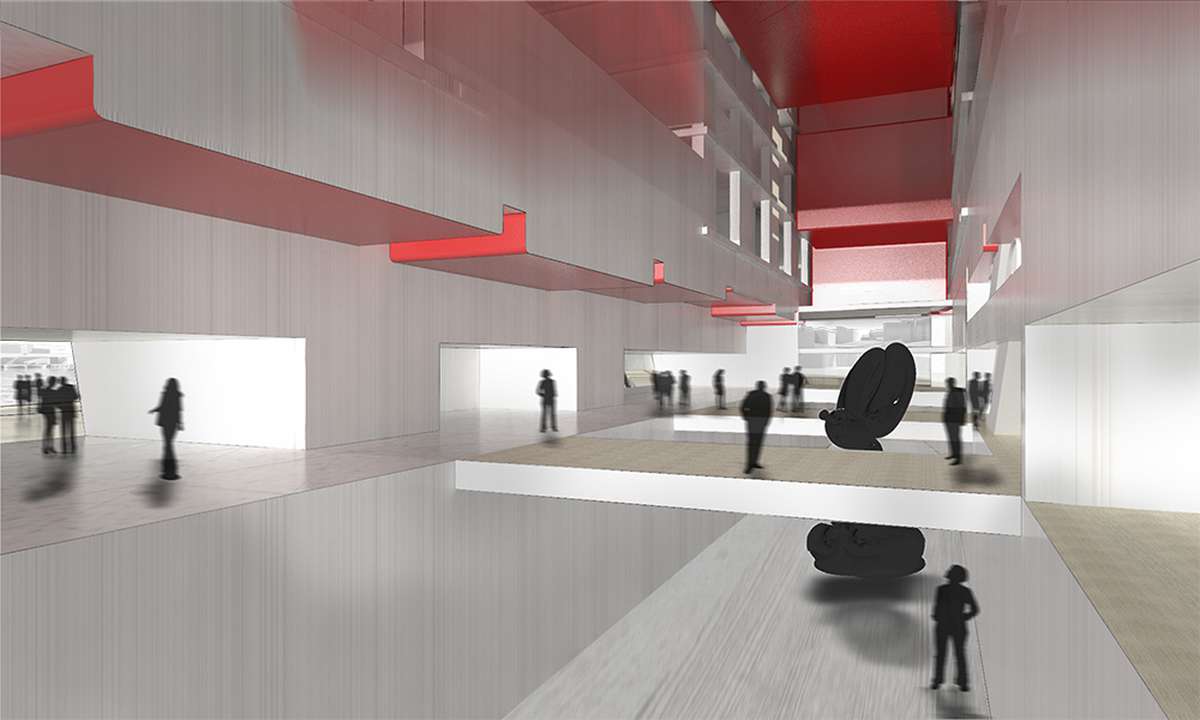
INTERACTION
In order to gather information one can indirectly use the time individual visitors spend in a particular room or with a particular object. Even facial expressions and emotions can already be processed.
The omnipresent smartphone serves as a tool for direct interaction. It allows the visitor to access information, convey evaluations, ask questions and receive answers – answers that one can still ponder even after the visit to the museum.
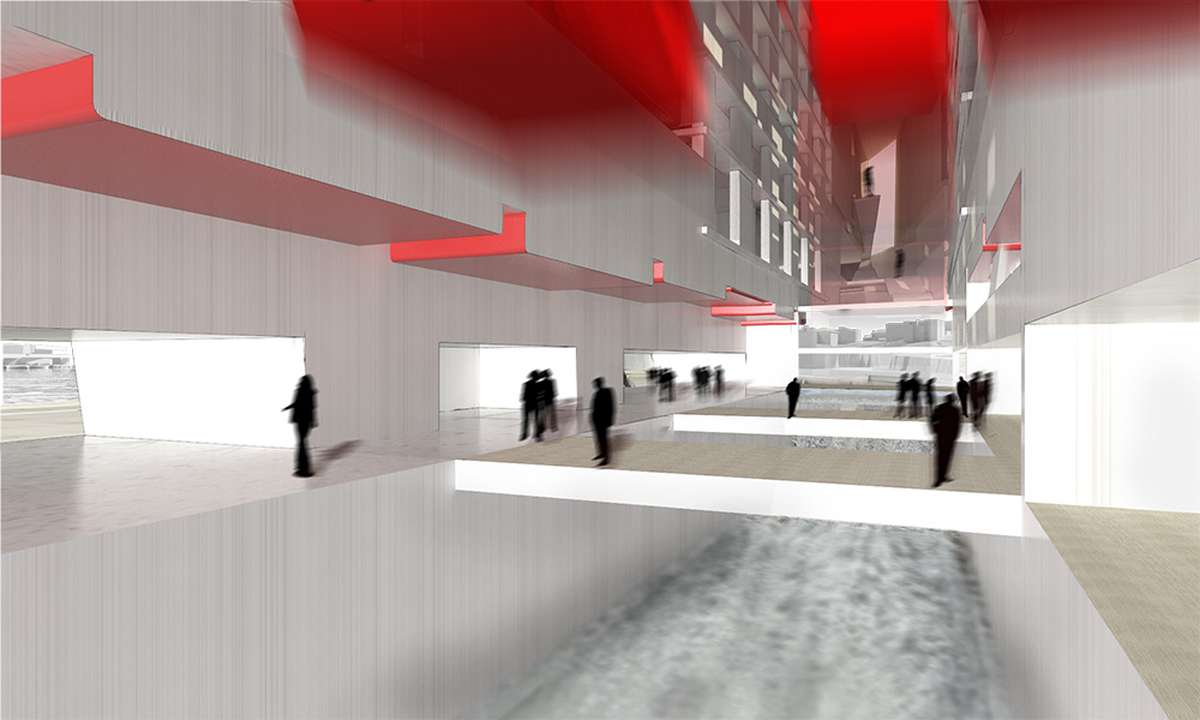
A new answer for a new trend-setting type of museum.
A space-time construction where it is possible to let every object
of the exhibition face every other object in a spatial context.
Time starts to dissolve space.
The next space is only a probability apart.
People move through a probability of space-time and exhibition.
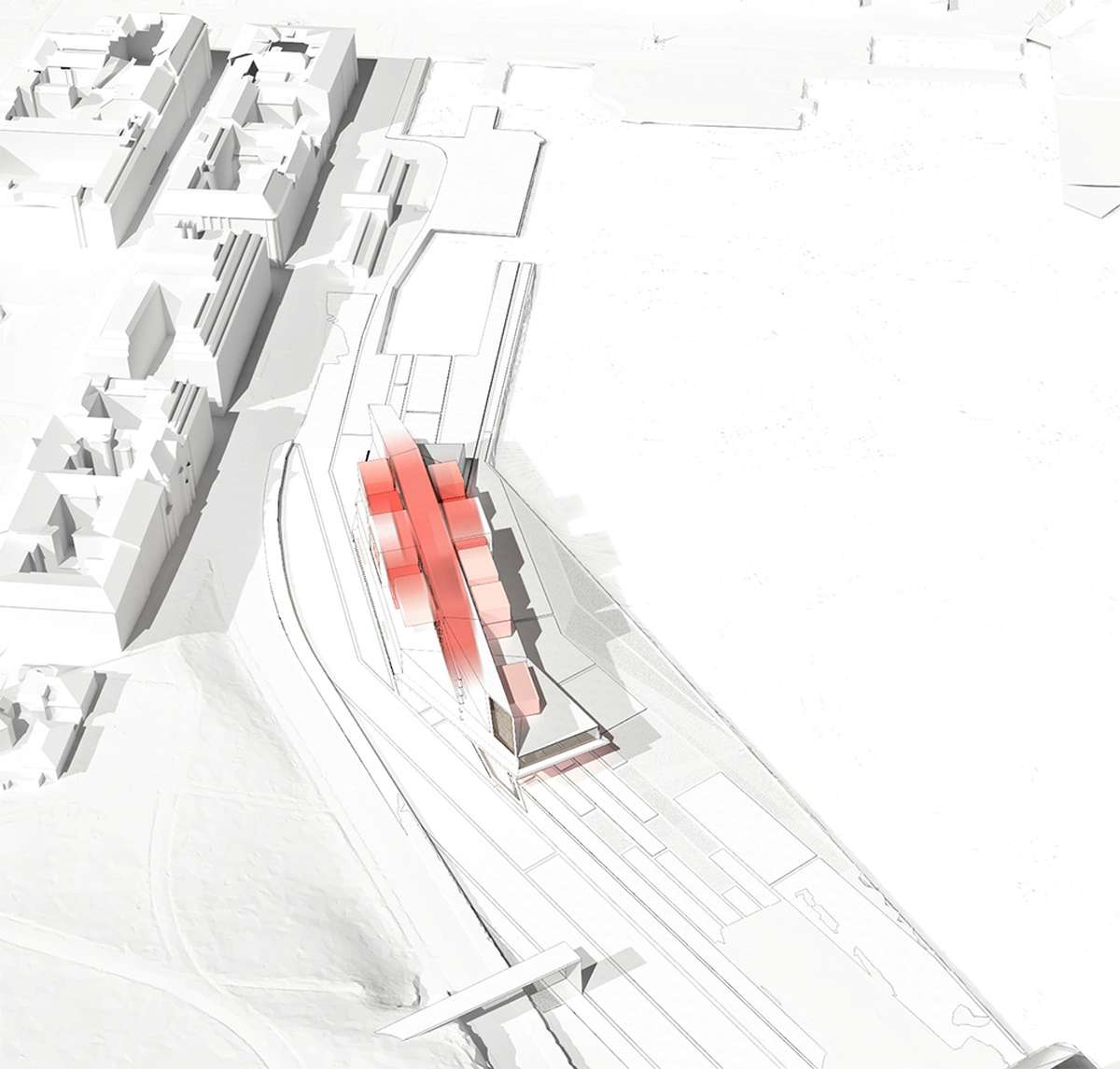
The information about reception of respective artworks is being translated here into a spatial context that is perpetually adjusting and realigning itself.
An artbook and a built chat room.
Museum in 4 Dimensions
Museum in 4 Dimensions

We suggest a mobile exhibition space that can be configured and reconfigured at will. In the canyon exhibition spaces move continuously and connect the adjacent spaces in varying ways again and again (marked red). These moving spaces migrate through all four storeys and form temporary connections.
The communication about the object has to take centre stage. Mobile exhibition spaces serve process-focused and future-oriented art that seeks dialogue with people and with other artworks. It is this partly silent dialogue that we aim to foster. That also means that the way spaces are joined and assembled becomes subject to change and thus can be manipulated and controlled.
The recipient visitor becomes an integral part of the work.
The communicative aspect of art is foregrounded.
Communication is not static!
Exhibitions must not be static anymore!
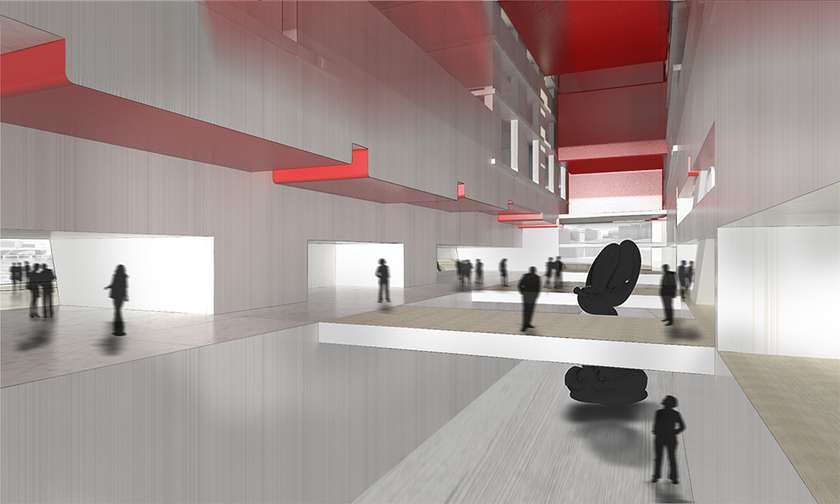
INTERACTION
In order to gather information one can indirectly use the time individual visitors spend in a particular room or with a particular object. Even facial expressions and emotions can already be processed.
The omnipresent smartphone serves as a tool for direct interaction. It allows the visitor to access information, convey evaluations, ask questions and receive answers – answers that one can still ponder even after the visit to the museum.
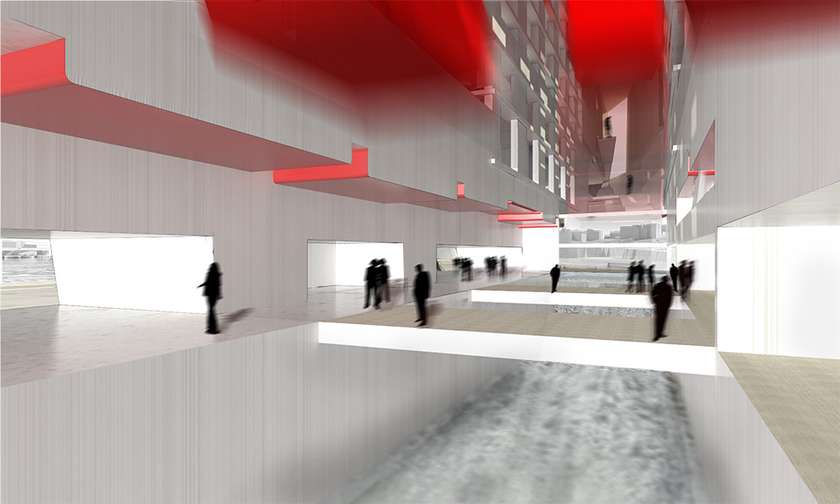
A new answer for a new trend-setting type of museum.
A space-time construction where it is possible to let every object
of the exhibition face every other object in a spatial context.
Time starts to dissolve space.
The next space is only a probability apart.
People move through a probability of space-time and exhibition.
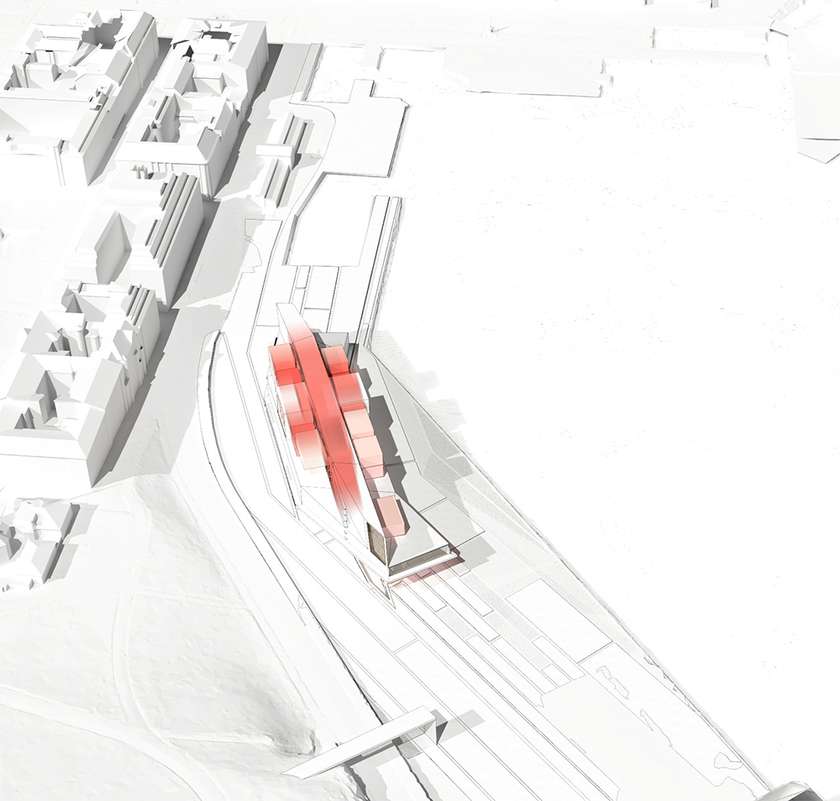
The information about reception of respective artworks is being translated here into a spatial context that is perpetually adjusting and realigning itself.
An artbook and a built chat room.